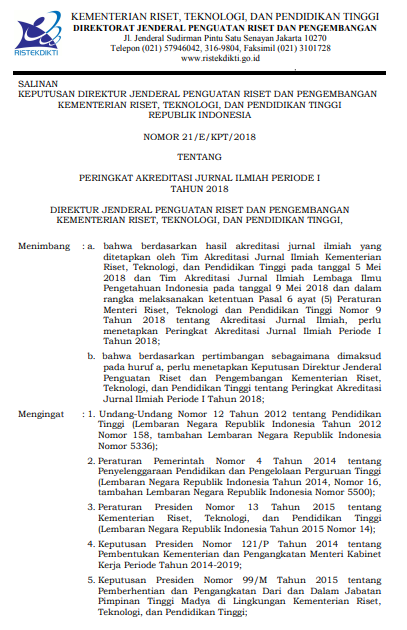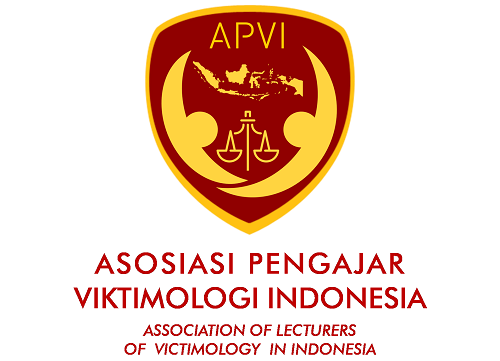MODEL OF VILLAGE HEAD ELECTION ARRANGEMENT IN VILLAGE GOVERNANCE LAW
Abstract
This study aims to examine the right model in the arrangement of village head elections after the stipulation of Law No. 6 year 2014 on Village. This research is a normative law research by laws, historical, and conceptual approach. The result shows that a direct and simultaneous election model shall be the solution for the next Village Head Election. Simultaneous election model is designed since it is philosophically considered to make efficiency of the Village Head Elections, in terms of efficiency of budget, time and effort. The principle of this policy is an attempt to create a more equitable simultaneous democratization to minimize the chances of cheating. Since if the elections were not held simultaneously, it would give chance to the outsider to involve. The simultaneous election requires a coherent policy. This coherence will produce an effective synchronization of all types of elections implementation in Indonesia.
Keywords: head of village, model, election, arrangement
Full Text:
PDF View
References
Asshiddiqie, Jimly, 2012, Hukum Tata Negara dan Pilar-Pilar Demokrasi, Jakarta, Sinar Grafika.
Fajar, Mukti dan Yulianto Achmad, 2010, Dualisme Penelitian Hukum Normatif & Empiris, Yogyakarta, Pustaka Pelajar.
Harahap, Hasrul, “Evaluasi Pelaksanaan Pilkada Serentak Tahun 2015”, Jurnal Renaissance, Vol. 1 No. 1, Mei 2016, Jakarta: Prima Center Indonesia.
Khoiriza N, Muhammad., “Desentralisasi sebagai Upaya Pembangunan Desa secara Menyeluruh Menurut UU No. 6 Tahun 2014”, Jurnal Asy-Syir’ah, Vol. 50, No. 1, Juni 2016, Yogyakarta: Fakultas Syariah dan Hukum UIN Sunan Kalijaga Yogyakarta.
Kurniadi, Dede, “Rancang Bangun Aplikasi Sistem Pemilihan Kepala Desa Yang Terintegrasi Dengan SMS Gateway”, Jurnal Wawasan Ilmiah, Vol. 6, No 11, September 2014, Garut: LPPM AMIK Garut.
Kusuma Putra, Chandra, Ratih Nur Pratiwi, Suwondo, “Pengelolaan Alokasi Dana Desa Dalam Pemberdayaan Masyarakat Desa (Studi pada Desa Wonorejo Kecamatan Singosari Kabupaten Malang)”, Jurnal Administrasi Publik (JAP), Vol. 1, No. 6, 2013, Malang: Fakultas Ilmu Administrasi Universitas Brawijaya.
Nurcholis, Hanif, “Undang-Undang Nomor 6 Tahun 2014 Tentang Desa Dilihat Dari Pasal 18 B Ayat 2 UUD 1945”, Jurnal Masalah-masalah Hukum, Jilid 43 No. 1, 1 Januari 2014, Semarang: Fakultas Hukum Universitas Diponegoro.
Predi Natakusuma, Gusti, “Partisipasi Politik Masyarakat Dalam Pemilihan Kepala Desa Pasca Pembentukan Desa Sungai Raya Dalam Kecamatan Sungai Raya Kabupaten Kubu Raya, Jurnal S-1 Ilmu Pemerintahan, Vol. 4 No. 4, Edisi Desember 2015, Kalimantan Barat: Fakultas Ilmu Sosial dan Ilmu Politik Universitas Tanjungpura.
Saraswati, Retno, “Arah Politik Hukum Pengaturan Desa Ke Depan (Ius Constituendum)”, Jurnal Masalah-masalah Hukum, Jilid 43 No. 3, Juli 2014, Semarang: Fakultas Hukum Universitas Diponegoro.
Sri Kusuma Dewi, Amelia, Ngesti D. Prasetyo, “Interpretasi Bentuk Badan Usaha Milik Desa Menurut UU No. 6 Tahun 2014”, Jurnal Media Hukum, Vol. 22 No.2, Desember 2015, Yogyakarta: Fakultas Hukum Universitas Muhammadiyah Yogyakarta.
DOI: http://dx.doi.org/10.20884/1.jdh.2017.17.2.789
Refbacks
- There are currently no refbacks.
JURNAL DINAMIKA HUKUM Indexed by :
 | Jurnal Dinamika Hukum | |
| Faculty of Law, Universitas Jenderal Soedirman | Copyright of Jurnal Dinamika Hukum | |
| Yustisia IV Building, Law Journal Center | ISSN 2407-6562 (Online) ISSN 1410-0797 (Print) | |
| Purwokerto, Central Java, Indonesia, 53122 | JDH is licensed under a Creative Commons Attribution 4.0 International License | |






